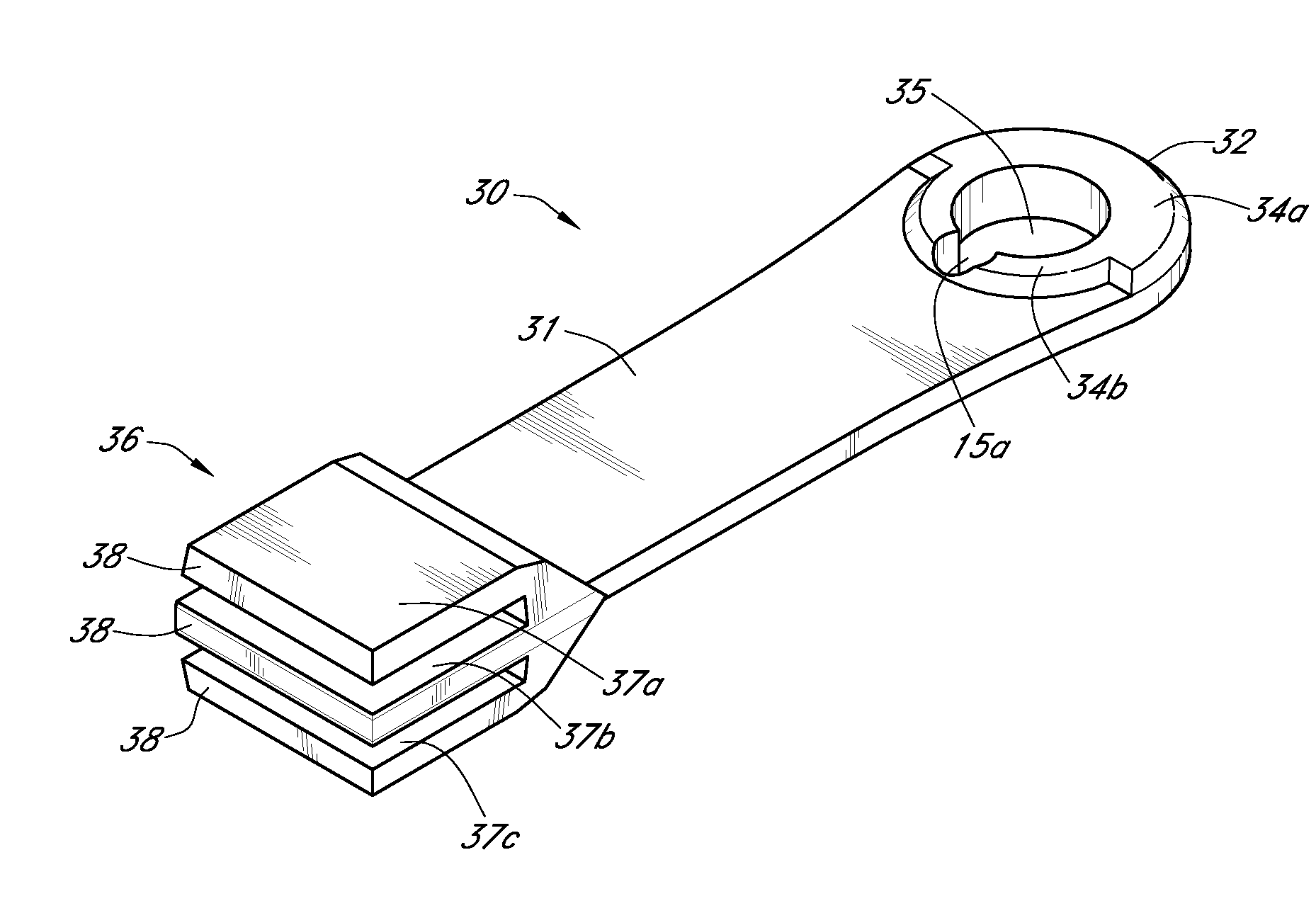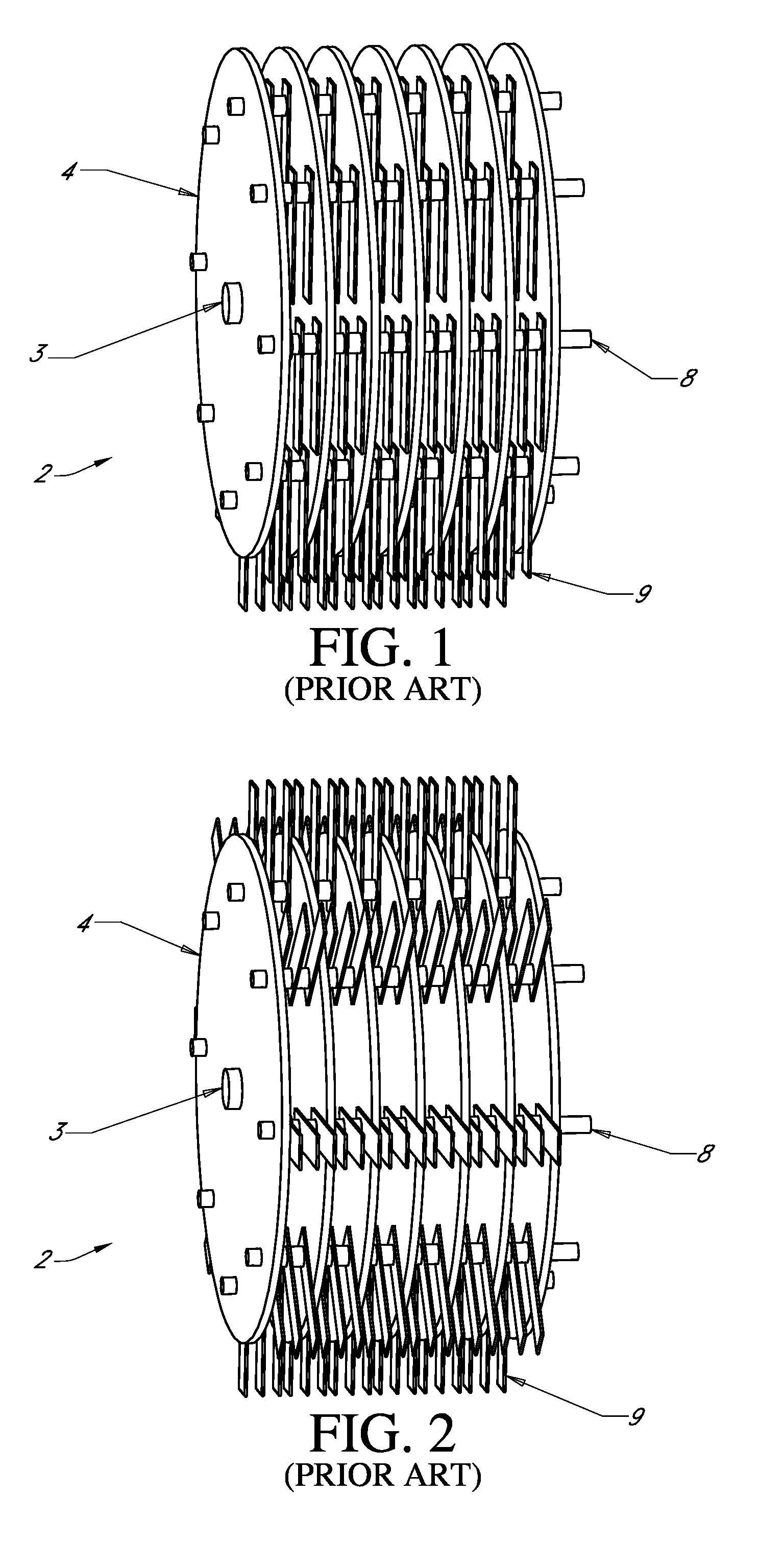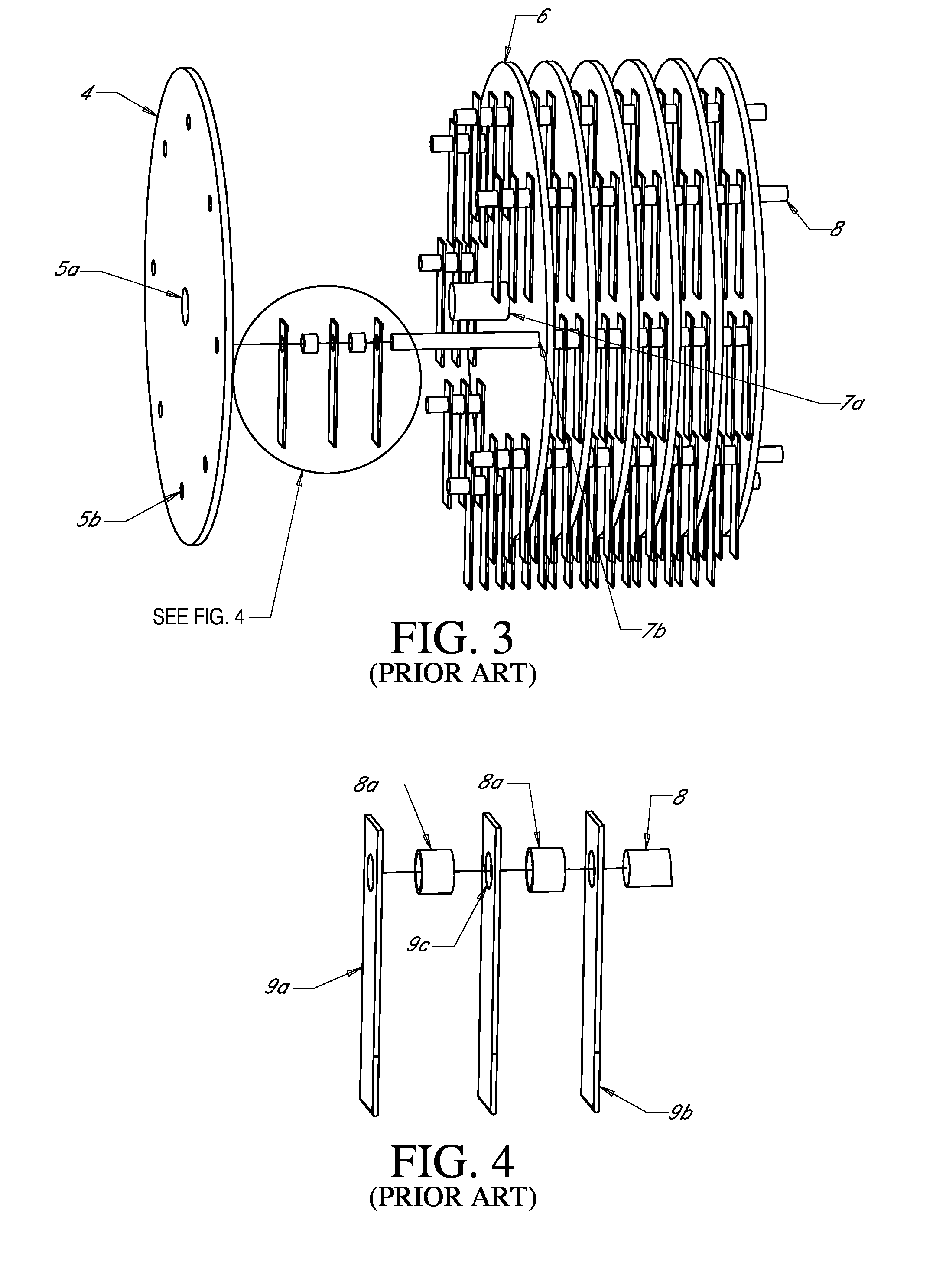Hammer
a technology of hammer and hammer blade, which is applied in the field of hammers, can solve the problems of requiring immediate maintenance and repair, severe damage to the hammermill, and wear of the hammer blade over a relatively short period of operation, and achieves the effect of improving the hardness of the hammer blade or the tip, and improving the rotational securement of the hammer
- Summary
- Abstract
- Description
- Claims
- Application Information
AI Technical Summary
Benefits of technology
Problems solved by technology
Method used
Image
Examples
first embodiment
[0054]FIGS. 5-6 show the notched hammer 10 for use in a rotatable hammermill assembly 2, which type of hammermill assembly 2 was previously described herein. The notched hammer 10 is comprised of a notched hammer first end 12 (also referred to herein occasionally as the securement end) for securement within the hammermill assembly 2 and a notched hammer second end 16 (also referred to herein occasionally as the contact end) for delivery of mechanical energy to and contact with the material to be comminuted. The notched hammer first end 12 is connected to the notched hammer second end 16 by a notched hammer neck 11. A notched hammer rod hole 15 is centered in the notched hammer first end 12 for engagement with and attachment of the notched hammer 10 to the hammer rod 8 of a hammermill assembly 2. Typically, the distance from the center of the notched hammer rod hole 15 to the most distal edge of the notched hammer second end 16 is referred to as the “hammer swing length.”
[0055]As sho...
second embodiment
[0059]The notched hammer neck 11 in the second embodiment is not as thick as the notched hammer first end 12 or the notched hammer second end 16. This configuration of the notched hammer neck 11 allows for reduction in the overall weight of the notched hammer 10, to which attribute the neck voids 11a also contribute. The mechanical energy imparted to the notched hammer second end 16 with respect to the mechanical energy imparted to the notched hammer neck 11 is also increased with this configuration. The neck voids 11a also allow for greater agitation of the material to be comminuted during operation of the hammermill assembly 2.
[0060]A third embodiment of the notched hammer 10 is shown in FIG. 9. The notched hammer rod hole 15 in the third embodiment includes a notched hammer first shoulder 14a and a notched hammer second shoulder 14b oriented symmetrically around the notched hammer rod hole 15. As explained in detail above for the first embodiment of the notched hammer 10, the fir...
third embodiment
[0061]The edges of the notched hammer neck 11 in the third embodiment are non-parallel with respect to one another, and instead form an hourglass shape. This shape starts just below the notched hammer rod hole 15 and continues through the notched hammer neck 11 to the notched hammer second end 16. This hourglass shape yields a reduction in weight of the notched hammer 10 and also reduces the vibration of the notched hammer 10 during operation.
[0062]A forth embodiment of the notched hammer 10 is shown in FIG. 10, which most related to the second embodiment of the notched hammer 10 shown in FIG. 8. The fourth embodiment does not include neck voids 11a. As shown, the fourth embodiment provides the benefits of increasing the surface area available for distribution of the opposing forces placed on the notched hammer rod hole 15 in proportion to the thickness of the notched hammer neck 11 without using a notched hammer first or second shoulder 14a, 14b. As with some other embodiments disc...
PUM
 Login to View More
Login to View More Abstract
Description
Claims
Application Information
 Login to View More
Login to View More - R&D
- Intellectual Property
- Life Sciences
- Materials
- Tech Scout
- Unparalleled Data Quality
- Higher Quality Content
- 60% Fewer Hallucinations
Browse by: Latest US Patents, China's latest patents, Technical Efficacy Thesaurus, Application Domain, Technology Topic, Popular Technical Reports.
© 2025 PatSnap. All rights reserved.Legal|Privacy policy|Modern Slavery Act Transparency Statement|Sitemap|About US| Contact US: help@patsnap.com



